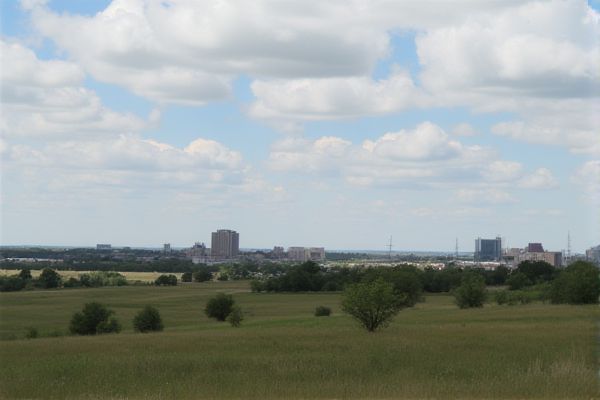
Cost of living in Nebraska: Affordable housing options available statewide. Lower overall living costs. Reasonable utility expenses. Affordable childcare and education. Varied grocery pricing. Competitive healthcare costs. Moderate transportation expenses. Accessible public transportation. Reasonable dining and entertainment costs. No state inheritance tax.
Affordable housing options available statewide
In Nebraska, there is a significant shortage of affordable rental homes, particularly for extremely low-income households, with 67,077 renter households facing severe cost burdens and a shortage of 45,275 affordable rental homes. The Nebraska Affordable Housing Trust Fund (NAHTF) and programs like the Omaha Housing Authority's affordable housing communities, which include properties participating in the Low Income Housing Tax Credit (LIHTC) Program, aim to address these issues by increasing the supply and quality of affordable housing.
Lower overall living costs
The cost of living in Nebraska is 9% lower than the national average, with housing costs being 21% lower, utilities 15% lower, groceries 4% lower, and healthcare 2% lower. This makes Nebraska an attractive option for those seeking affordable living. For a detailed breakdown of these cost comparisons, you can explore the Cost of Living Calculator. With such competitive rates, Nebraska offers a compelling case for individuals and families wanting to maximize their purchasing power and overall quality of life.
Reasonable utility expenses
In Nebraska, utility expenses are reasonably low, with average monthly costs for electricity, natural gas, and water being below the national average. For example, in Lincoln, total energy costs are $120.74 per month, and in Omaha, they are $152.54, both of which are lower than the national average. If you're considering relocating to this state, understanding the Cost of Living in Nebraska can provide valuable insights into budgeting and financial planning, making it an attractive option for cost-conscious individuals and families.
Affordable childcare and education
In Nebraska, the cost of childcare is exceptionally high, often surpassing the cost of tuition and fees at public universities. With an average annual expense for infant care in a center-based setting exceeding $13,000, families experience financial strain while childcare workers are poorly compensated. As a result, parents face significant challenges in accessing affordable care. To gain a deeper understanding of this issue, readers can explore the insights provided by [Kids Count Nebraska](https://kidscountnebraska.com/commentary-2-2-2/), a resource that highlights the economic and social impacts of the childcare crisis in the state.
Varied grocery pricing
In Nebraska, grocery prices are generally lower than the national average, with residents spending between $233 and $266 per month on food, which is 1.4 percent below the national average, and even lower in cities like Lincoln and Omaha. Specific items like bread, local cheese, milk, and boneless chicken breast are priced competitively, with Nebraska often being cheaper than other states like Washington. For more insights and details regarding the Cost of Living in Nebraska, one can find substantial information helpful in planning a budget. This overall affordability makes Nebraska an attractive place for families and individuals looking to optimize their living expenses.
Competitive healthcare costs
Healthcare costs in Nebraska are 2% lower than the national average, contributing to the state's overall 9% lower cost of living compared to the national average. For a detailed analysis and cost of living estimation, check out the RentCafe Cost of Living Calculator, which provides valuable insights into how Nebraska compares to other states in various expense categories.
Moderate transportation expenses
In Nebraska, moderate transportation expenses are influenced by the condition of roads and bridges, with driving on deteriorated roads costing motorists $328 per driver annually in additional repairs, vehicle depreciation, and increased fuel consumption. Despite these costs, the state's overall transportation expenses are managed through investments and federal funding, such as the $2.3 billion from the Infrastructure Investment and Jobs Act.
Accessible public transportation
Public transportation in Nebraska is available in major cities like Omaha and Lincoln, with fares starting at $1.25 per ride, and services including buses, paratransit, and rapid transit, making it a viable and relatively affordable option. Notably, free rides are currently available on all StarTran buses in Lincoln, enhancing the accessibility of public transit. For more information, you can explore the Costs of Living in Nebraska to understand how transportation fits into your budget.
Reasonable dining and entertainment costs
Dining and entertainment costs in Nebraska are generally lower than the national average, with cities like Omaha and Lincoln offering goods and services at 8.2% and 2.8% below the national average, respectively. For example, movie tickets in Omaha cost $11.62, and a haircut costs $22.80, making dining and entertainment reasonably affordable. Discover more details about living costs in Nebraska on the Rent.com blog, where the broader economic landscape of the state is explored.
No state inheritance tax
Nebraska does have a state inheritance tax, contrary to the assumption. The tax rates and exemptions vary based on the beneficiary's relationship to the decedent, with certain exceptions such as transfers to spouses and charitable organizations being exempt. For more detailed information on this topic, you can refer to the Nebraska Inheritance Tax 2022 Update provided by the Center for Rural Affairs.
